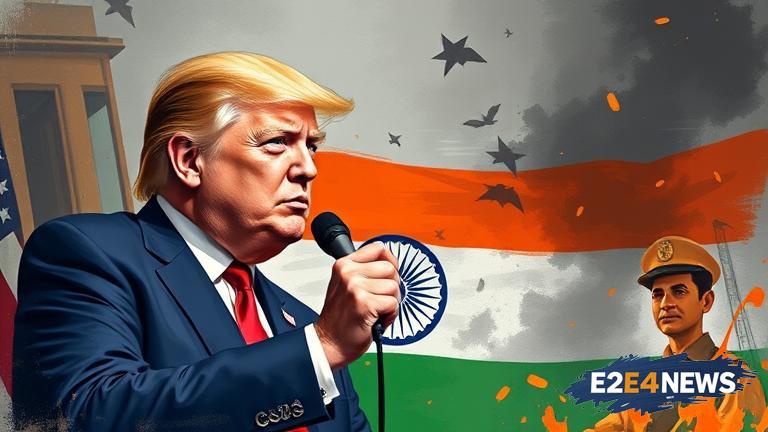The recent tariff threats made by US President Donald Trump against India have been perceived as a trade tactic to secure a better deal. According to Dhruva Jaishankar, a fellow at the Observer Research Foundation (ORF), Trump’s threats are a negotiating strategy to put pressure on India to agree to a more favorable trade agreement. Jaishankar believes that Trump’s administration is using tariffs as a means to achieve its trade goals, and India is not an exception. The US has been seeking greater market access and reduction of trade barriers in India, and the tariff threats are a way to expedite the process. India has been facing criticism from the US for its trade practices, including high tariffs and restrictions on foreign investment. The US has also been pushing India to open up its markets to American companies, particularly in the agriculture and dairy sectors. Jaishankar notes that India has been trying to balance its trade relationships with the US and other countries, while also protecting its domestic industries. The Indian government has been engaging in talks with the US to resolve trade differences and avoid tariffs. However, the outcome of these talks is uncertain, and the threat of tariffs remains a concern for Indian businesses. The US is one of India’s largest trading partners, and any disruption in trade relations could have significant economic implications. Jaishankar emphasizes that India needs to be cautious in its approach and ensure that any trade agreement with the US is fair and equitable. The Indian government has been exploring alternative markets and trade relationships to reduce its dependence on the US. Meanwhile, the US has been pursuing trade agreements with other countries, including the European Union and Japan. The ongoing trade tensions between the US and China have also created opportunities for India to increase its exports to the US. Jaishankar suggests that India should focus on diversifying its trade relationships and reducing its trade deficit with the US. The Indian government has been taking steps to improve its trade infrastructure and increase its competitiveness in the global market. However, more needs to be done to address the trade imbalance and create a more favorable business environment. The US-India trade relationship is complex and multifaceted, and resolving trade differences will require careful negotiation and diplomacy. Jaishankar concludes that Trump’s tariff threats are a wake-up call for India to re-evaluate its trade relationships and pursue a more aggressive trade strategy. The Indian government needs to be proactive in engaging with the US and other trading partners to secure better trade deals and protect its economic interests. As the trade tensions between the US and India continue to escalate, it remains to be seen how the situation will unfold and what the ultimate outcome will be. The US-India trade relationship is critical for both countries, and a mutually beneficial agreement is essential for promoting economic growth and cooperation. In the meantime, Indian businesses and exporters are bracing themselves for the potential impact of tariffs and exploring alternative markets and strategies to mitigate the risks. The situation is being closely watched by trade experts, policymakers, and businesses around the world, and the outcome will have significant implications for global trade and economic relationships.
